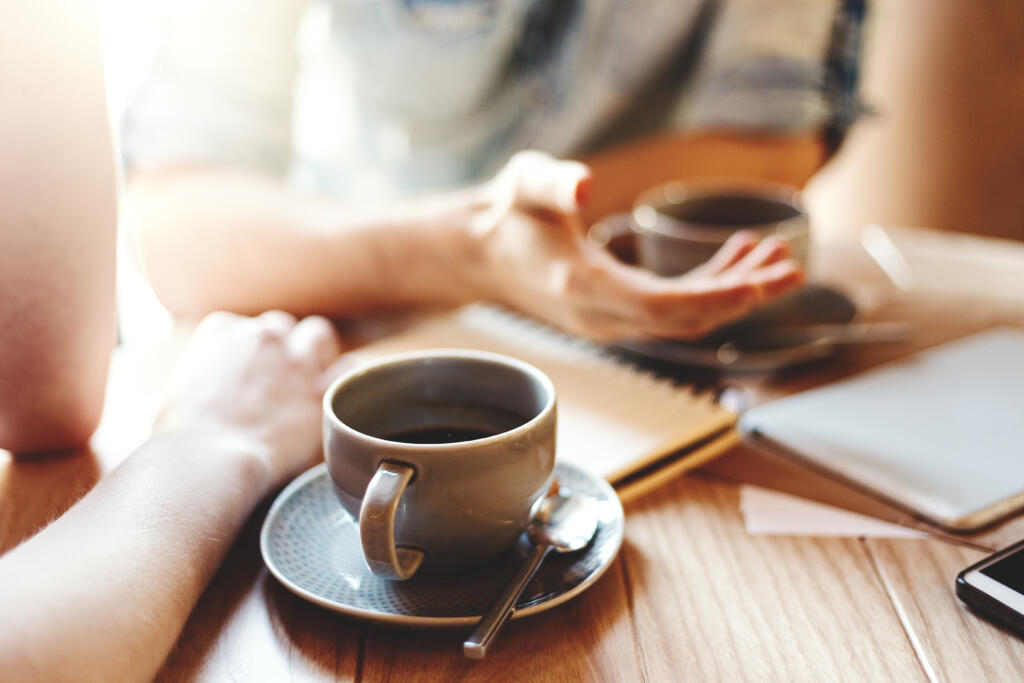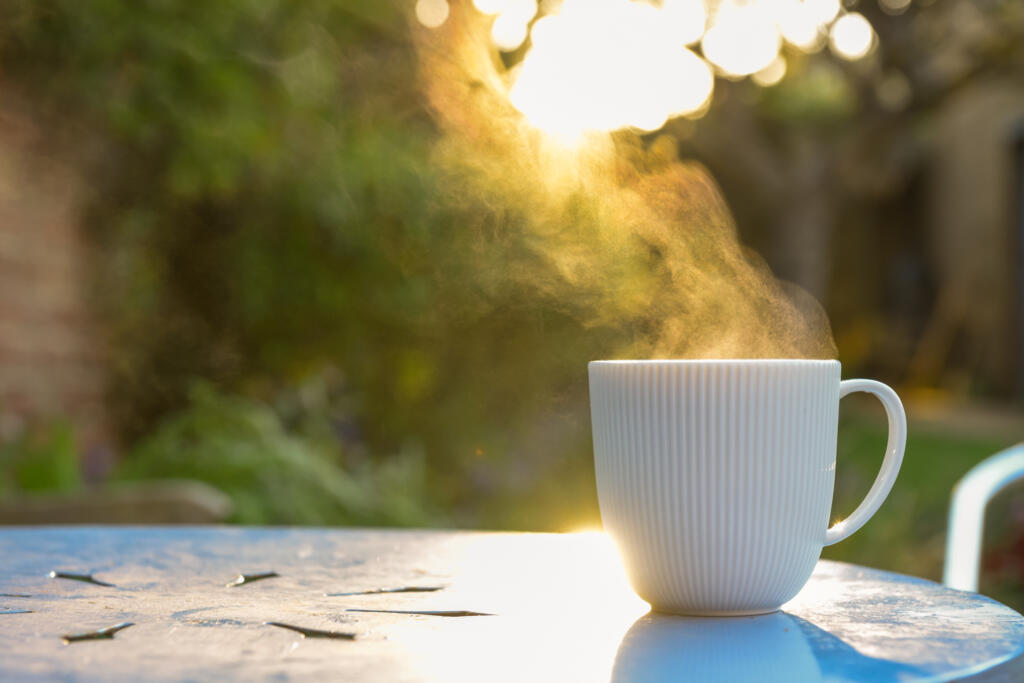Are you curious about how much water evaporates from a cup of coffee as it cools? Have you ever thought about what happens to that water and why the taste of your coffee changes as it cools down?
In this blog post, we’ll explore these questions and more. Read on to learn about the science behind the evaporation process and how much water evaporates from a cup of coffee as it cools from boiling to room temperature.

Pure Conduction Model
A pure conduction model predicts that hot water in an insulated cup will cool down much faster than what is experimentally observed. This is because the heat transfer rate of conduction is not as efficient as other modes like convection and radiation.
Thus, the thermal energy must move through the cup walls by conduction, which is slower. The amount of water evaporating from the cup of coffee while it cools down can be estimated using a combination of convective and conductive heat transfer models, as well as the known boiling point and latent heat of vaporization of water.
Evaporation versus Boiling
Evaporation and boiling are processes by which a liquid is changed into a gas. Both involve the process of converting liquid molecules into vapor molecules.
However, there are some key differences between the two.
Boiling occurs when a liquid is heated to its boiling point, usually 100°C or 212°F, and it vaporizes rapidly and explosively. On the other hand, evaporation occurs at any temperature from 0 to 100°C (32 to 212°F). When evaporation occurs, some of the liquid molecules at the surface become vapors and escape into the atmosphere.
This process is slower than boiling and can occur without an external heat source. Additionally, evaporation can be affected by factors such as pressure and viscosity of the liquid; for example, water with cream added will evaporate more slowly due to its increased viscosity.
Heat transfer also plays a role in evaporation; when heat is removed from a liquid, it cools, which causes an increase in the evaporation rate.
Factors Influencing Evaporation Rate

Several factors can influence the rate of evaporation of a liquid, including temperature, intermolecular forces, size of molecules, and surface area.
Evaporation of Room Temperature Water
At room temperature, water will evaporate regardless of the presence of a lid. This is because evaporation is a natural process and occurs when the liquid molecules become energetic enough to escape into the atmosphere as a gas.
When it comes to coffee, however, viscosity and the presence of fats can work against the evaporation process by creating an insulating layer that prevents heat transfer to the atmosphere. This can slow the rate at which water evaporates from a cup of coffee as it cools from boiling to room temperature.
As such, it is important to remember that not only does boiling causes water to evaporate more quickly, and it affects how much water will evaporate from a cup of coffee as it cools.
Coffee Cooling and Evaporation
As we’ve seen, water will evaporate at room temperature. This holds for a cup of coffee as well, although the evaporation rate of coffee is affected by many different factors.
As the coffee cools from boiling to room temperature, less heat is available for evaporation. This is due to the difference in energy needed for boiling versus evaporation, which affects the cooling rate.
Additionally, the viscosity of the coffee can also affect how quickly it cools since thicker liquids take longer to evaporate.
Finally, convection currents also influence how much water evaporates from a cup of coffee as it cools; if the air is dry and cooler than the liquid in the cup, then more heat will be transferred to the air more water will evaporate.
All these factors combined can influence the amount of water that evaporates from a cup of coffee as it cools from boiling to room temperature.
Viscosity and Evaporation
As liquids become more viscous, they evaporate more slowly since there is more resistance between the molecules of the liquid.
This can be seen in a cup of coffee – if you add cream, it will thicken the coffee and thus reduce its rate of evaporation. This is because the added cream increases the viscosity of the coffee, making it harder for water vapor to escape from the surface.
Heat transfer from boiling liquids can also be affected by viscosity. If a liquid is more viscous, it will require longer for its temperature to reach equilibrium with its environment and for evaporation to occur.
Heat Transfer and Evaporation
Heat transfer by conduction and convection are the main methods through which the coffee cools. The coffee is in a Styrofoam cup, so other methods of heat transfer can be neglected. As the coffee cup cools, heat is transferred from the coffee to its surroundings, allowing it to evaporate into water vapor.
This process continues until the coffee reaches room temperature, and it helps to explain why some water is lost as it cools.
Convection and Cooling
Convection plays an important role in the cooling of a cup of coffee. As the hot water rises, it is replaced by cooler water from the bottom of the cup. This cooler water is then heated and rises, creating a continuous convection cycle as the coffee cools.
The air surrounding the cup also assists in cooling by absorbing heat from the coffee and carrying it away. This process is known as convective cooling and helps reduce the coffee’s temperature faster than if conduction was the only method of heat transfer.
Heat transfer through convection is also affected by other factors, such as viscosity, which can slow down the evaporation rate of coffee. These combined factors determine how quickly a cup of coffee cools to room temperature.
Experimental Results

Several experiments were conducted to understand how much water evaporates from a cup of coffee as it cools from boiling to room temperature. The experiments showed that the cooling rate of the hot liquid in an insulated cup was much higher than the pure conduction model predicted.
The heat transfer rate with the room temperature increased when stirring the coffee. Furthermore, it was observed that boiling water evaporates much faster than cold water due to the greater number of molecules in motion. It was also found that viscosity affects evaporation and that convection plays a role in cooling.
Finally, various factors influence evaporation rates, such as humidity and air temperatures. As evidenced by these experiments, the evaporation of coffee from boiling to room temperature is a complex process involving multiple variables.
Conclusion
In conclusion, the amount of water that evaporates from a cup of coffee as it cools from boiling to room temperature varies depending on several factors. The pure conduction model shows that hot water in an insulated cup will cool down much faster than what is experimentally observed.
Evaporation is the primary factor in cooling coffee, as boiling-hot water will evaporate quickly as steam. Viscosity also plays an important role, as adding cream thickens the coffee and reduces the rate of evaporation. Heat transfer and convection can also affect the cooling rate, but they can be neglected when the coffee is in a Styrofoam cup.
Finally, the amount of water that evaporates can be calculated by taking into account the initial mass of the cup and its final temperature. All these factors combine to determine how much water evaporates from a cup of coffee as it cools from boiling to room temperature.
Disclaimer: This post contains affiliate links, which means I may receive a small commission, at no extra cost to you, if you make a purchase using these links. Remember to support us by purchasing through the Amazon/Walmart/Impact Radius links provided. Last update on 2024-04-23 / Affiliate links / Images from Amazon Product Advertising API
Disclosure: No compensation or free products were received in exchange for writing this review.

Editorial Staff
The editorial staff at Crazy Coffee Crave is a team of coffee enthusiasts & Baristas who enjoy the one thing we all think about as soon as we get up in the morning. Trusted by thousands of readers worldwide.





